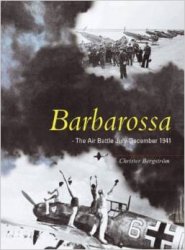AIR PACIFIC, LTD. (1): Fiji (1967-1971). Air Pacific, Ltd. is formed at Suva in June 1967. Employing a lightplane fleet of Beech and Cessna aircraft, the carrier begins nonscheduled charter flights in July to local South Pacific islands. Late in the decade, a Britten-Norman BN-2 Islander is acquired and scheduled frequencies are undertaken to Cicia, Gau, Koro, Lakeba, Ono-i Lau, Pacific Harbor, Rabi, Rotuma, Savusavu, and Vanuabalvu.
When Fiji Airways, Ltd. is renamed Air Pacific, Ltd. (2) in April 1971, the first Air Pacific, Ltd. is retitled as Fiji Air, Ltd.
AIR PACIFIC, LTD. (2): Air Pacific Centre, P. O. Box 9266, Nadi Airport, Raiwaqa, Fiji; Phone 679 720 777; Fax 679 720 512; Http://www. fijifvb. gov. fj/airlines/airpac. htm; Http://www. singapore. com/pata/airpac. htm; Http://www. supersite. net/airpn2/docs/home. htm; Code FJ; Year Founded 1971. The former Fiji Airways, Ltd. receives its present name in April 1971 as the island government, Qantas Airways (Pty.), Ltd., British Overseas Airways Corporation (BOAC), and Air New Zealand, Ltd. remain the major shareholders. Local services are provided within the Fiji group. The fleet’s 4 de Hav-illand DH 114 Herons and 3 Hawker Siddeley HS 748s are joined on March 4, 1972 by the company’s first jetliner, a BAC 1-11-479, delivered from Hurn, England, via Brindisi.
The new British-made jetliner inaugurates service on April 2 over a route from Nadi International Airport to Port Moresby via Port Vila and Honiara. Enplanements total 206,371.
Airline employment in 1973 stands at 512. Regional routes are initiated linking Fiji with New Caledonia, Tonga, Western Samoa, Nauru, the Gilbert Islands, and Tuvalu.
A second BAC 1-11-479 is acquired on August 14 and it initiates service to Brisbane via Port Vila and Honiara. Customer bookings advance 19.7% to 257,000 and freight traffic climbs 29.2%. Still, the financial situation is bad, due largely to large increases in fuel and labor costs.
On July 4, 1974, 1 of the BAC 1-11-479s is leased out to Air Malawi, Ltd. for 18 months. A total of 268,320 passengers are flown.
The employee population stands at 460 in 1975. One HS 748 is replaced by three Britten-Norman BN-2ATrislanders. Air Niugini (Pty.), Ltd. Fokker F.27-200s assume the Honiara to Port Moresby sector on July 1, the same day that Air Pacific’s remaining BAC 1-11-469 reroutes its Nadi to Brisbane midpoint stop from Honiara to Noumea, New Caledonia. Simultaneously, it launches a new route from Nadi to Auckland via Tongatapu, capital of Tonga in the Friendly Islands.
The chartered BAC 1-11-479 returns to service on November 16. Consequently, frequencies on the Australian service are increased to five per week and to New Zealand, four per week. Freight soars 32%, but passenger boardings dip 4% to 258,000.
The employee population numbers 507 in 1976. In honor of the company’s twenty-fifth anniversary, all aircraft are repainted in new livery.
Passenger bookings rise a modest 2.8% to 265,169, but freight balloons 21% to 1.59 million FTKs.
The fleet is radically altered in 1977 as 1 BAC 1-11-479, HS 748s, and BN-2As are all leased out or sold; they are replaced by 4 BN-2 Islanders, 1 de Havilland Canada DHC-6, 1 Beech Baron, and 1 Beech B-80 Queen Airliner.
The Fiji government in 1978 acquires the holdings belonging to British Airways, Ltd. (2), Qantas Airways (Pty.), Ltd., and Air New Zealand, Ltd., gaining full majority control of the airline; shareholding is divided between the government of Fiji (89.78%), Kiribati (1.11%), Solomon Islands (1.11%), Tonga (1.11%), Western Samoa (0.51%), and Nauru (0.37%), with private interests holding the remaining 6.01%.
Qantas Airways (Pty.), Ltd. continues to provide technical service and to fly long-haul, regularly scheduled flights. S. H. Quigg is named managing director of the 478-employee airline. Delivered via Bahrain, a BAC 1-11-408, previously operated by Bavaria Fluggesellschaft, mbH. & Co., arrives on June 26 and enters service on July 1.
Passenger boardings fall 0.5% to 280,000, but freight grows 20.4%.
Airline employment is increased by 1.2% in 1979 to 513. Service is launched to Pago Pago and Papeete. Two Embraer EMB-110s join the fleet with two more on order. The Islanders, Twin Otter, Baron, and Queen Air are sold or leased as two chartered BAC 1-11-479s and one HS 748 are returned to service. A five-year contract is obtained from Air Tungaru to operate that carrier’s Honolulu service. Bookings fall again, down 2.6% to 275,364.
The BAC 1-11-408, having rusted out, is withdrawn in 1980 as is an HS 748. Two owned EMB-110s are delivered and a Boeing 737-219 is leased from Air New Zealand, Ltd. to fill the gap until an ordered machine is delivered.
Cargo grows 3.3% to 2.91 million FTKs, but passenger traffic falls a dramatic 15% as only 262,244 passengers are carried.
A total of 272,450 passengers are transported in 1981 and 260,456 in 1982. The operating loss in the latter year is F$5.9 million.
Airline employment in 1983 is 562, a 2.4% boost. The fleet now includes 1 B-737-219B leased from Air New Zealand, Ltd., 4 EMB-110s, and 2 BAC 1-11-479s. Employing a DC-10-30 leased from
Western Airlines, thrice-weekly Fiji-Honolulu joint services are inaugurated as “Project America.” This is Air Pacific’s first experience on a major trunk route.
Passenger boardings increase 4.9% to 280,202 while freight traffic rises 0.4% to 39.8 million FTKs. A F$5.9-million operating loss is again suffered, this time on revenues of F$87 million, an 8% increase.
During 1984, the Nadi-Honolulu DC-10-30 joint service with Western Airlines is flown, but then discontinued. Joint services with Qantas Airways (Pty.), Ltd., employing Jumbojets, are also maintained from Nadi-Noumea, Sydney, and Melbourne during 1984. Although the 2 BAC 1-11-479s are withdrawn in March, regional jetliner services are maintained by the 565-employee airline with another newly delivered B-737-219, the one already on hand, and other leased from Polynesian Airlines.
The three domestic Fiji Island destinations of Nadi, Suva, and Labasa are served by the company’s four Bandeirantes, while all other routes are turned over to the privately owned local operators, Fiji Air, Ltd. and Sunflower Airlines, Ltd. As traffic has not materialized at the rate hoped for, the DC-10-30 service to Hawaii is terminated in December and replaced by a joint operation with a Qantas Airways (Pty.), Ltd. B-747-267s, from Nadi to Honolulu and Los Angeles.
Enplanements total 277,426 and revenues of F$43.17 are earned. Expenses, however, total F$53.73 million and cause the carrier an operating loss of F$10.55 million, putting it into technical bankruptcy.
Airline employment is reduced to 470 in 1985. In January, the airline’s lengthy association with Qantas Airways (Pty.), Ltd. is renewed in the form of a three-year Management Support Agreement. The Australian flag carrier sends John Schaap out to become CEO, along with two other Qantas executives, Allan Moore and John Campbell. This agreement will subsequently be modified and extended through 1995.
A B-747-267 is leased from Qantas Airways (Pty.), Ltd. on March 25; christened Island of Viti Levu, it receives a colorful, banded livery and is placed into service from Nadi to Sydney via Auckland, Brisbane, Christchurch, and Melbourne. As expenses increase, Air Pacific offices in Australia and North America are closed, with Qantas Airways (Pty.), Ltd. becoming the company’s general sales agent.
Unnecessary assets, including a stockpile of BAC 1-11 spare parts, are sold and the thrice-weekly Suva to Western Samoa service is cut to weekly, employing the Polynesian Boeing under a joint service arrangement.
Passenger boardings leap to 289,785 and revenues ascend to F$52.13 million. Expenses swell to F$63.05 million and the operating loss increases to F$10.86 million. A small F$143,000 net profit is earned.
The workforce is increased 4% in 1986 to 498 and the fleet includes
1 B-747-267, 1 B-737-219B, 2 EMB-110s, and 1 DHC-6. The latter, leased from Fiji Air, is employed for Nadi to Suva roundtrips. “Mate’s Rate” fares are introduced for traveling couples.
In September, 2 Avions de Transport Regional ATR42-320s are ordered for 1987 delivery; an agreement is reached to lease 2 of the type from Air Queensland, Ltd. until then. The chartered aircraft allow the company to increase the number of its flights from Fiji to Tonga from one to six each week and to Vanuatu from one to three each week. A third weekly B-737-219B service is initiated to Auckland. Meanwhile,
2 additional EMB-110s are placed in service.
Passenger boardings decline 4.4% to 271,439 and freight is off by 5.7% to 6.03 million FTKs. Largely as a result of Australian and New Zealand currency devaluation, revenues fall by 6.6% to F$43.9 million. AF$100,000 operating loss is suffered.
The payroll is cut 9.8% in 1987 to 449 as Qantas Airways (Pty.), Ltd. now takes a 20% financial interest in the Fijian carrier, atop its management consultancy. In July, the decision is taken to postpone the launch of Fiji-Japan service for two years. Due largely to two coups in the country during the year, traffic figures are mixed. Continental Airlines now withdraws from Fiji, leaving the nation with no service to the U. S.
In November, the original Island of Viti Levu is put on the joint Qantas Airways (Pty.), Ltd. service and is replaced by an older, ex-Qantas
Airways (Pty.), Ltd. B-747-149, which is given the same name and takes over its predecessor’s duties under a revised code-sharing agreement. The new arrangement calls for code-sharing between Australia and Fiji employing the B-747-149 and Qantas aircraft and between Fiji and Los Angeles via the Fiji Jumbojet.
People stay away from the airline and customer bookings drop another 4.3%, to 259,690. Cargo, on the other hand, swells by 69.5% to 10.23 million FTKs. Revenues of F$41.1 million are earned and losses are again taken: F$1.76 million (operating) and F$624,000 (net).
Airline employment is increased by 13.4% in 1988 to 509 as Jumbojet flights begin linking Fiji with Tokyo (NRT). In the spring, the Qantas Airways (Pty.), Ltd. CEO Schaap is relieved by another executive from that airline, Andrew Drysdale. Two ATR42-320s join the fleet.
Passenger boardings recover and climb 13% to 311,200. Freight continues its upward march, by 35.6%, to 19.11 million FTKs. Revenues increase 52.2% to F$67.8 million. Costs are held down and F$5.3 million in operating income is generated. Net profit surges to F$5.3 million.
Employment climbs 12.2% in 1989 to 571 as B-747-149 service to Melbourne begins in the spring. Dissidents burn the control tower at Port Vila Airport in Vanuatu, restricting the carrier’s ATR42 services to that point.
Customer bookings swell 12.1% to 348,914 and cargo jumps to 50.22 million FTKs. A record operating profit of F$11 million is reported.
The workforce is increased by 3% in 1990 to 575 and the fleet includes 1 B-747-149, 1 B-737-219B, and 2 ATR42-320s. Two B-767-205ERs remain on order. One of the two B-767-205ERs arrives in July; christened Island of Vanua Levu, it is placed into service on the route to Auckland via Brisbane and Melbourne. The B-737-219B is withdrawn in August, the same month that the government purchases 9.16% of the Qantas Airways (Pty.), Ltd. interest, reselling the new shares to a Japanese firm developing resorts in Fiji.
Passenger boardings fall 5.6% to 324,990, but freight climbs 10.5% to 25.33 million FTKs. Revenues advance 11.9% to F$108 million.
The payroll climbs 3.5% in 1991 to 595. A two-year transfer of headquarters from Suva to Nadi is begun as is a second weekly service to Tokyo.
Customer bookings decline another 6% to 305,560, but cargo jumps 39.3% to 35.3 million FTKs. Revenues rise 17.1% to F$126.6 million.
During late spring 1992, Air Pacific sells its two ATR42s to GPA Group, which, in turn, provides the carrier with a B-737-5Y0 in September under a lease-purchase arrangement. Given a colorful livery and christened Island of Taveuni, the “Baby Boeing” is employed to resume Suva to Auckland service. Later in the year, a B-767-205ER is chartered and initiates flights from Fiji to Cairns, Wellington, and Christchurch. An order is placed for a B-767-3X2ER.
Enplanements total 309,908, the operating profit is F$2.7 million, and net gain is F$2.65 million.
Five new employees are hired in 1993 as the B-767-3X2ER arrives and the B-737-219B is re-leased from Air New Zealand, Ltd. Destinations now served by Chairman Gerald Barrack and CEO Drysdale’s airline include Melbourne, Sydney, Brisbane, Auckland, Tokyo, Suva, Tonga, and Moniara. The company’s head office and engineering base are shifted from Suva to Nadi. In September, the company begins code-sharing flights with Air Vanuatu with its B-767-205ER from Nadi to Port Vila.
Late in the year, a number of events transpire that give the carrier reason to believe it can profitably restart services to Hawaii and even fly beyond. Chief among these are the decision by Continental Airlines to abandon the South Pacific, the availability of new slots at Tokyo (NRT), and more U. S. tourists, in the wake of the American economic recovery, are visiting Fiji.
Passenger boardings decline another 10.6% to 280,207, but freight climbs 9.1% to 37.56 million FTKs. Revenues jump 6% to F$211.9 million and expenses are F$206.7 million, a 4% gain. As a result, the operating gain is F$5.2 million and net profit reaches F$3.7 million. The excellent financial showing results in shareholders receiving their first dividend in company history.
The airline’s paid-up capital totals $F19,480,300 in 1994 and ownership is split between the government of Fiji (79.55%), Qantas Airways (Pty.), Ltd. (10%), the Sea Com Corporation of Japan (7.5%), Air New Zealand, Ltd. (1.94%), and the governments of Kiribati, Tonga, and Solomon Islands (0.27% each), Nauru (0.8%), and Western Samoa (0.12%).
The B-747-149 inaugurates services to Los Angeles via Hawaii on July 2. Osaka (KIX) becomes a destination in October.
Enplanements inch up slightly to 280,866 and there are profits: F$3.36 million operating and F$2.41 million net.
Airline employment grows by 11.6% in 1995 to 640. In January, the carrier joins with Royal Tongan Airlines in the joint lease of a B-737-33A, which is employed to code-share flights between Fiji and Tonga. While the B-737-200 fleet of Air New Zealand, Ltd. is grounded for engine repairs in March-April, the company briefly subleases the B-737-219B back to the New Zealand flag carrier from whom it had been leased originally. In May, the Royal Tongan Boeing beings a new service from Tonga via Auckland to Sydney.
Return service is started twice weekly to Wellington and Christchurch from Nadi on July 11 under a new code-sharing agreement with Air New Zealand, Ltd. and the company enters into the frequent flyer program of Qantas Airways (Pty.), Ltd.
Passenger bookings jump 6.9% to 301,682 while freight traffic increases 47.8% to 50.55 million FTKs. Revenues climb 17.5% to F$161.61 million, while expenses move up by 14.2% to F$153.19 million. The operating profit swells to F$8.42 million while net gain reaches F$5.63 million.
Forty-eight new employees join the company, a 10.6% increase, during 1996 and the chartered fleet now includes 1 each B-767-3X2ER, B-737-5Y0, B-737-33A, and B-747-219B, the latter leased from Air New Zealand, Ltd. The B-767-3X2ER begins joint venture service with Air Caledonie International in July over a route from Nadi to Papeete. An order is sent to Boeing for a Next Generation B-737-700, for which the carrier will become South Pacific launch customer.
Enplanements accelerate 8.5% to 436,429 while 70.7 million FTKs are operated, a 7.4% increase. Operating income surges 11.3% to F$186.52 million and costs are up an almost-equal 11.4% to F$176.41 million. Operating gain moves to F$10.13 million and a net F$6.19-million profit is posted.
Airline employment grows 6.9% in 1997 to 757. Early in the spring, Polynesian Airlines begins to code-share on Air Pacific flights from Nadi to Apia, Samoa. Solomon Airlines, Ltd. enters into the same sort of pact covering flights between Nadi and Honiara using Solomon aircraft.
The executive vice president/chief operating officer of Hawaiian Airlines (HAL), Michael J. McQuay, is named managing director/CEO in November. New weekly roundtrips to Honolulu begin and a codesharing pact is entered into with Canadian Airlines International, Ltd.
Passenger boardings move ahead by 9.2% to 333,499, while freight traffic improves by 12.3% as 76.41 million FTKs are flown. Revenues inch up 2.1% to F$188.97 million as costs increase 31.9% to F$180.61 million. Although operating profit declines to F$8.36 million, the net gain advances to F$5.43 million, later adjusted upward to F$8.27 million.
In May 1998, the company sells another 28.5% stake to Qantas Airways (Pty.), Ltd., bringing the Australian major’s shareholding to 46%. Qantas also leases the Fijian national carrier a second B-747-219B, as flights to Sydney begin.
The Next Generation B-737-7X2 is delivered to Nadi on September 28. The first of its type to operate in the South Pacific, the new Boeing inaugurates service from Suva to Sydney on October 2.
The pact with Canadian Pacific Airlines, Ltd. is expanded on October 16. Under its terms, the two carriers, beginning on December 7, combine their marketing and fleet strengths to provide three weekly flights between Auckland and Honolulu. Canadian offers daily nonstop flights from Toronto to Honolulu and 13-times-a-week service from Vancouver to Honolulu. At Honolulu, passengers may seamlessly transfer to the Air Pacific B-767-3X2ER for any of the three onward nonstop weekly flights for which they may be booked.
In a move designed to strengthen its route network in the South Pacific, American Airlines concludes a code-sharing agreement with Air Pacific on December 18. Under the arrangement, American will, in the new year, place its “AA” code on Air Pacific’s four weekly return flights between Los Angeles and Nadi.
Passenger boardings jump 12.3% to 35,000, while cargo traffic accelerates 11.7% to 5.87 million FTKs. Revenues advance 30.4% to F$370.8 million, while costs climb 23.8% to F$344.2 million. The operating profit reaches F$28.5 million, while a net gain of F$13.20 million is reported.
On February 18, 1999, American Airlines begins to code-share on the Air Pacific nonstop B-747-219B return routes operated between Nadi and Los Angeles (LAX). The Fiji-based carrier simultaneously announces that a fifth weekly roundtrip between the two cities will commence in June.
The first of two Next Generation B-737-8X2s is delivered on May 24; it will be followed by a second in August. During the ceremony at Seattle, it is announced by Managing Director/CEO McQuay that the company is examining the possibility for year 2000 of new routes to the Cook Islands, linking Nadi, Auckland, and Rarotonga, as well as to Cairns in north Queensland.
The new Next Generation B-737-8X2 enters service on June 2 on the company’s route from Nadi to Melbourne. The second aircraft begins revenue flights in August, at which point the airline’s earlier model B-737s are withdrawn. The carrier becomes the first in the world to achieve 180 min. ETOPS certification for the Dash-800 type.
During the remainder of the year, the interiors of the carrier’s 2 Jum-bojets and the B-767-3X2ER are completely renovated. A fifth Los Angeles service is introduced.
Fuel prices continue to escalate, rising 58% to a 9-year high. The cost for fuel reaches 50.4% of the company’s total expenditures.
Although traffic figures are not available, financial data is released showing operating income rising 27% to FJ$471.7, with expenses climbing 28% to FJ$441 million. Operating profit reaches a record FJ$30.4 million, while net gain surges 48% to FJ$19.49 million.
On March 30, 2000, the code-share with Qantas Airways (Pty.), Ltd. is expanded on the Melbourne-Nadi route; the weekly Qantas B-767 service is replaced by a dual-designator flight using Air Pacific’s B-747-219B.
Due to the political unrest and hostage situation in Fiji in late May into June, the carrier, on June 5, cancels its flights from Brisbane to Fiji for a week. It does, however, maintain its links from Nadi to Sydney and Melbourne. A number of government restrictions, particularly with regard to the uplifting of freight and mail, are encountered.
Twice-weekly B-737-8X2 return service is inaugurated on October 1 from Nadi to Vancouver via Honolulu.
AIR-PAK AIRLINES: United States (1967-1973). This third-level scheduled all-cargo freight line is founded at Dallas in 1967. U. S. launch customer for the Shorts SC-7 Skyvan, Air-Pak begins freight services between its base and the Texas cities of Houston, Beaumont, Sherman, Mineral Wells, and Graham.
It does not survive the first great oil crisis of 1973.




 World History
World History









